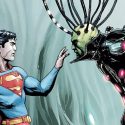The more incarnations of Hyrule that Nintendo has created, the hotter the debate surrounding the Legend of Zelda timeline has become. In 2011, that debate was finally laid to rest thanks to the Hyrule Historia, a book laying out the official order in which Link and Zelda’s adventures were meant to be arranged. Then, several years later, that timeline was amended. Additionally, more games are released regularly, which warrants more debate.
There’s still plenty of discussion to be had for the best entry point into the franchise, however, with so many different Zelda games to choose from. Even so, for players who love to play a franchise by following its overarching plot, the timeline placement is clear — for the most part. Here is the official chronological order of every Legend of Zelda title to date.
Updated November 2025: Specifications of each game have been added, covering information like their North American release dates and platforms. Two new games — Echoes of Wisdom and Age of Imprisonment have also been released since this list was last updated!
The Timeline Split, Explained
What many find confusing about the Zelda timeline is that it splits into three. After the events of Ocarina of Time, three things happen:
1. The Fallen Hero Timeline: The hero (Link) falls in battle. One timeline continues from here, following the defeat of the hero and what happens next.
2. The Child Timeline: The hero wins against Ganon, and is sent back in time to seven years prior to stop Ganondorf’s plot before it can continue. A timeline carries on from this younger Link’s story, after he and Zelda thwart Ganondorf’s plans.
3. The Adult Timeline: The hero wins against Ganon. Another timeline continues from this point, following the story of the older version of Link and Zelda once Ganon is sealed away.
4??? The Calamity: It seems Breath of the Wild takes place at the end of all three timelines, somehow uniting them, though Nintendo has been kind of vague about it. The official talking point is that Nintendo will never reveal the game’s placement in the timeline, because, overall, the developers and writers want to leave it up to fan interpretation.
We’ll go into more detail about each of these timelines, but for now, here’s a handy chart for those who prefer a visual representation. Note: these titles will jump to their respective sections when clicked.
Early History
The franchise begins before the Kingdom of Hyrule is founded or the Master Sword is even created. Before Skyward Sword, which is the first entry in the chronology, the story of Link and Zelda had already begun.
Three goddesses create the world, and leave the Triforce behind, entrusted to the goddess Hylia. After evil demons appear in the world, Hylia cuts out a piece of the world and raises it into the sky to protect her people. She is unable to use the Triforce as a goddess, so she sacrifices her divinity to enable her to use the Triforce’s power. She and her chosen hero then use this power to seal away the Demon Lord, Demise.
However, all three of them (the hero, the now-mortal Hylia, and Demise) are then destined to reincarnate for eternity. The spirits of the three will return time and time again as Link, Zelda, and Ganon, respectively.
Skyward Sword
In Skyward Sword, Link hails from the flying island town of Skyloft where he’s a knight in training and childhood best friends with Zelda. His adventure begins when Zelda is spirited away to the Surface by mysterious forces, compelling him to explore the unknown world below.
After the events of the game, it’s revealed that Zelda is the reincarnation of the goddess Hylia. She and Link once again defeat Demise, who vows to return as an evil power time and time again.
Skyward Sword was famous for its extensive use of motion controls and the chance to explore the sky world with a flying mount, the Loftwings. The story’s events set the stage for generations of battle over the Triforce, while contextualizing the cycle that keeps Link, Zelda, and Ganon together, along with the history of the Master Sword.
The Minish Cap
The Minish Cap is the first game in the timeline to take place in Hyrule, and was the closest thing to an origin story for Link’s cap before Skyward Sword was released. The title refers both to a diminutive people called the Minish, as well as a particular Minish named Ezlo. After being turned into a bird-like cap by the treacherous Vaati, Ezlo teams up with Link to save Hyrule.
The Minish Cap also marks the first chronological appearance of the recurring Four Sword, describing its creation and role in the first battle against Vaati. Notably, The Minish Cap also features a power called the “Light Force” which takes the Triforce’s functional role in the story. Whether or not the two forces are directly related has yet to be confirmed.
Four Swords
The now-monstrous Vaati returns for the next game in the timeline. Four Swords places emphasis on the Four Sword itself and was the first game in the series to introduce the blade. In fact, Four Swords was the first multiplayer Legend of Zelda entry and required two to four players to complete. It was later released as a free single-player title on the DSi and 3DS, albeit only temporarily.
Narratively, Four Swords contributes little to the Zelda timeline other than introducing the Four Sword itself as a concept. At this point in the timeline, Vaati is a beast who’s lost most sense of self and the game itself spends next to no time on cutscenes — focusing on randomly generated dungeons instead. In the end, Vaati is sealed away and Zelda is rescued by (the) Link(s).
Ganon is revealed to be behind many of the game’s events, but he is once again defeated and sealed away by the hero and the princess.
The Timeline Splits
As a result of the events of Ocarina of Time, the official timeline splits into three, all of which run in alternate realities alongside each other.
Ocarina of Time
Arguably the most famous entry in the series, Ocarina of Time holds a very important place in the timeline. The story focuses on seven years of the Hero of Time’s life as his childhood is uprooted and destiny forces him to confront Ganondorf long before he’s ready. Time travel becomes pivotal in thwarting Ganondorf’s conquest of Hyrule, as well as influencing the future of the Zelda timeline.

7 Games To Play If You Miss Legend Of Zelda: Ocarina Of Time
Players who enjoy The Legend of Zelda: Ocarina of Time can find similar experiences in the following games.
At the end of Ocarina of Time, Princess Zelda divides the timeline by sending Link back to the past without compromising the future. OoT’s end credits clarify that these past and future timelines can coexist, setting the stage for sequels that branch from Ocarina’s ending. These timelines are referred to as The Fallen Hero Timeline, The Child Timeline, and The Adult Timeline.
The Fallen Hero Timeline
If the hero falls in battle, Zelda must resort to desperate measures. Ganon steals the Triforces of Wisdom and Courage, and the Seven Sages, including Zelda, banish Ganon and the Triforce into the Sacred Realm. A war breaks out, titled the Imprisoning War, and the Sages must seal access to the Sacred Realm to prevent Ganon’s escape.
Inside, Ganon corrupts the Sacred Realm and turns it into the Dark World.
A Link to the Past
A Link to the Past was notable for introducing the Master Sword into the franchise, establishing the formula for future games (in particular Ocarina of Time and Twilight Princess), and greatly expanding the series’ lore.































